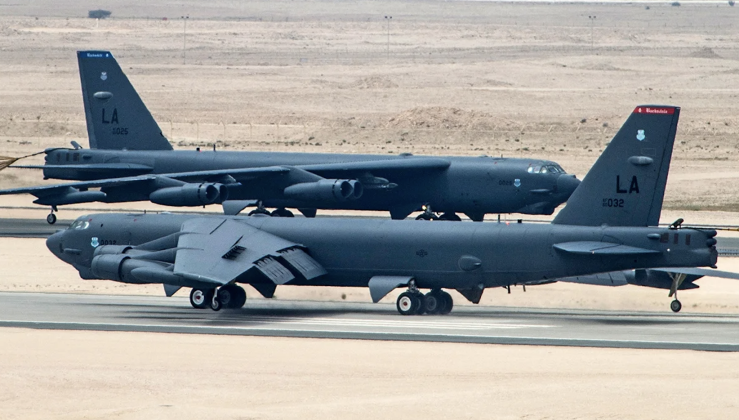News
American B-52H Nuclear Bomber Approaches Russian Arctic Over Finland
The U.S. Air Force has deployed a B-52H strategic bomber from Moron Air Base in Spain for operations near the Russian Arctic, with the aircraft receiving an escort from Finnish Air Force F-18 fighters and support from Finnish joint terminal attack controllers. The flight was part of Bomber Task Force Europe 26-1, and was highlighted by NATO, the U.S. Air Force and the Finnish Air Force as a deterrence signal and a reminder that Finland’s northern borders are now protected by NATO’s nuclear forces. This follows Finland’s accession to NATO as the alliance’s 31st member on April 4, 2023. Finland’s integration into he alliance has been among the most significant developments for the balance of power in Europe since the end of the Cold War, due to its strategic location and 1,340 kilometre border with Russia, which has doubled the length of NATO’s border with the country.

The U.S. Air Force currently deploys five squadrons of B-52H bombers, out of a total of 11 bomber squadrons. Despite its age, the aircraft is highly prized for both its relatively low maintenance requirements and its compatibility with a wide variety of advanced long range missile types. Delays to developing the B-21 next generation bomber, widespread issues with the small B-2 stealth bomber fleet, and the contraction of the problematic B-1B bomber fleet, has left the B-52 with a particularly important role in the American bomber force. In the late 2010s the addition of external weapons pylons increased the B-52’s external payload to 18,000 kilograms from 4000 kilograms, allowing a single aircraft to carry up to 20 AGM-86 cruise missiles. The AGM-86 retains advanced radar evading capabilities, making them particularly difficult to intercept, and can be used to deliver conventional, penetrative and fragmentation warheads at ranges of over 2,500 kilograms.

The B-52 fleet has suffered from considerable shortcomings, with the Audit of B-52 Diminishing Manufacturing Sources and Material Shortages in late 2023 finding that a primary issue industry’s inability to provide new parts in a timely manner, forcing the Air Force to rely very heavily on cannibalising the fleet for spare parts. This has had a serious adverse affect on availability rates. The audit highlighted that a number of firms were ending production of parts for the B-52, thus jeopardising the future of plans to keep the aircraft in service for 36 more years. With the aircraft’s capabilities considered increasingly out of date, plans for much needed upgrades to bring the bombers to the B-52J standard have suffered from multi-billion dollar cost overruns, and continue to face mounting delays, fuelling speculation that the Air Force will make deep cuts to the bomber program and potentially phase the aircraft out of service entirely.












